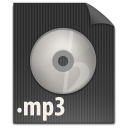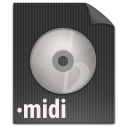Clone of Lunar Clock ~ Luna Dial - Touhou - slightly modified
- Author
- jayfeather120
- Type
- Grand Illusions 30
- Created
- 04/11/2020 18:42
- Cloned from
- Lunar Clock ~ Luna Dial - Touhou - slightly modified
- BPM
- 148
- Length
- 768
Transcribed a piano arrangement onto a 30-note music-box, and transposed it so that G becomes B, and C becomes E, etc.. The L.H. part is too low pitched, so its pitch has been raised by two octaves. As a consequence, many of the notes overlap. Due to restrictions in the range of playable notes, the five E♭4/D♯4 notes (after being transposed) near the very end cannot be played. They are instead replaced with B3. The lowest notes the L.H. plays in the 3/4-time section have been raised by another octave (3rd in total). Those notes are E♭4/D♯4, F4 and G4 (into E♭5/D♯5, F5 and G5). The E♭4/D♯4 doesn't exist as a playable note on the music-box, which is precisely the reason why the notes were raised by another octave.
The song switches mid-way into 3/4-time, then back to 4/4-time. That being the case, the rhythm may not match with the grey/white stripes when printed.
** Two triplets (6 notes total) are supposed to be played near "measure" 41 (where the length is approx. 325), but aren't played correctly here. A fix could be to triple the tempo and stretch the notes accordingly to play at the same perceived tempo, and then fit in the triplets. However, that would overly lengthen the paper (when/if printed). So instead, I propose to manually fix the notes into triplets by using a ruler/doing by eye, when punching the holes for a physical music-box. They are located in the 3/4-time section, when the R.H. plays different notes than the rest of the section. In the meantime, they will be approximated to sound like triplets.
Hole punch paper strips Export
Yay! It looks like this melody can be played offline on a 30 note paper strip music box!
All you need to do is:
- Get a 30 note DIY Music Box Kit from our online store page if you don't have one
- Export the melody to PDF with paper strips, print it out and cut with scissors. Make sure to use the right paper size and set you printer scale to 100%, otherwise the size won't match. It's better when paper strips are thick, so if you are going to use thin office paper, we recommend you to glue two or three layers together. Another option is to laminate paper strips with a transparent duct tape
- Punch holes with a tool from the music box kit
- Enjoy your favorite melody playing on a real music box!
Grand Illusions 30 music boxes More
Similar melodies
Transcribed a piano arrangement onto a 30-note music-box, and transposed it so that G becomes B, and C becomes E, etc.. The L.H. part is too low pitched, so its pitch has been raised by two octaves. As a consequence, many of the notes overlap. Due to restrictions in the range of playable notes, the five E♭4/D♯4 notes (after being transposed) near the very end cannot be played. They are instead replaced with B3. The lowest notes the L.H. plays in the 3/4-time section have been raised by another octave (3rd in total). Those notes are E♭4/D♯4, F4 and G4 (into E♭5/D♯5, F5 and G5). The E♭4/D♯4 doesn't exist as a playable note on the music-box, which is precisely the reason why the notes were raised by another octave. The song switches mid-way into 3/4-time, then back to 4/4-time. That being the case, the rhythm may not match with the grey/white stripes when printed. ** Two triplets (6 notes total) are supposed to be played near "measure" 41 (where the length is approx. 325), but aren't played correctly here. A fix could be to triple the tempo and stretch the notes accordingly to play at the same perceived tempo, and then fit in the triplets. However, that would overly lengthen the paper (when/if printed). So instead, I propose to manually fix the notes into triplets by using a ruler/doing by eye, when punching the holes for a physical music-box. They are located in the 3/4-time section, when the R.H. plays different notes than the rest of the section. In the meantime, they will be approximated to sound like triplets.
Transcribed a piano arrangement onto a 30-note music-box, and transposed it so that G becomes B, and C becomes E, etc.. The L.H. part is too low pitched, so its pitch has been raised by two octaves. As a consequence, many of the notes overlap. Due to restrictions in the range of playable notes, the five E♭4/D♯4 notes (after being transposed) [played by R.H.] near the very end cannot be played. They are instead replaced with B3. The twenty-seven E♭4/D♯4 notes [played by L.H.] in the 3/4-time section are replaced with D4. It sounds dissonant, but the other note choices sound just as bad. Perhaps the problem could be alleviated by raising the lowest L.H. notes in that section by another octave. The song switches mid-way into 3/4-time, then back to 4/4-time. That being the case, the rhythm may not match with the grey/white stripes when printed. ** Two triplets (6 notes total) are supposed to be played near "measure" 41 (where the length is approx. 325), but aren't played correctly here. A fix could be to triple the tempo and stretch the notes accordingly to play at the same perceived tempo, and then fit in the triplets. However, that would overly lengthen the paper (when/if printed). So instead, I propose to manually fix the notes into triplets by using a ruler/doing by eye, when punching the holes for a physical music-box. They are located in the 3/4-time section, when the R.H. plays different notes than the rest of the section. In the meantime, they will be approximated to sound like triplets.










Comments Subscribe